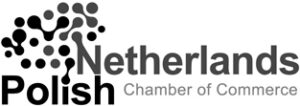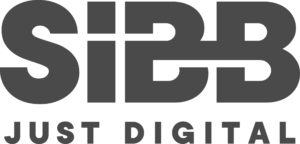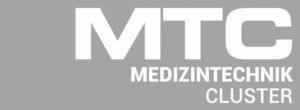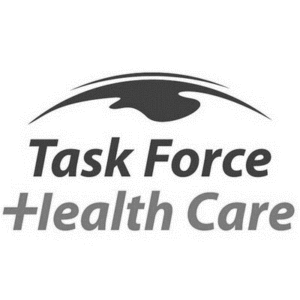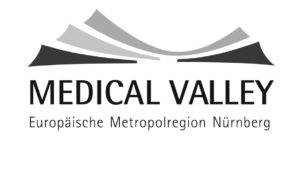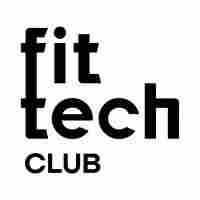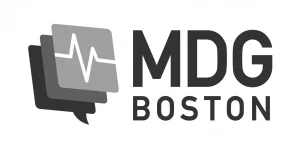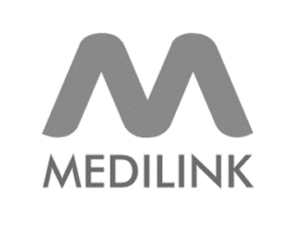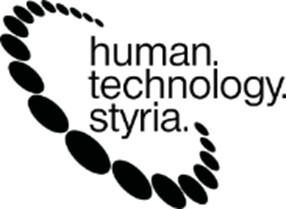HL7 FHIR (Fast Healthcare Interoperability Resources) was Introduced in 2014.
FHIR is considered the most innovative and flexible standard, utilizing modern web technologies like RESTful APIs and JSON/XML formats for data exchange.
It simplifies integration across systems and supports mobile applications and cloud services.
How does FHIR improve healthcare data interoperability compared to older standards like HL7 V2
FHIR (Fast Healthcare Interoperability Resources) significantly enhances healthcare data interoperability compared to older standards like HL7 V2 through several key advancements:
Resource-Based Model
Flexibility and Modularity: FHIR employs a resource-based approach, where each piece of data (e.g., patient records, medications) is treated as a distinct resource. This modularity allows for easier integration and customization, enabling developers to create tailored solutions that meet specific healthcare needs.
Standardized Resources: FHIR defines clear and standardized resources, which simplifies the understanding and implementation of data exchanges across different systems, thereby improving interoperability.
Use of Modern Web Technologies
RESTful APIs: FHIR utilizes RESTful web services, which are widely recognized in modern software development. This approach facilitates faster implementation and easier integration with existing web-based applications compared to HL7 V2’s traditional messaging format.
Support for Multiple Formats: Unlike HL7 V2, which is limited to specific encoding formats, FHIR supports various formats such as JSON and XML, making it adaptable to different technological environments and reducing the complexity of data exchanges.
Improved Usability and Implementation
Simplified Onboarding: FHIR’s design focuses on implementer usability, making it easier for healthcare organizations to onboard new data exchange partners without extensive custom coding. This ease of use encourages broader adoption across diverse healthcare applications.
Rapid Deployment: The straightforward nature of FHIR allows for quicker deployment of healthcare IT solutions, which is essential in a rapidly evolving digital landscape.
Enhanced Security and Data Exchange Options
Robust Security Features: FHIR incorporates better security measures to protect sensitive health information during transmission. This is particularly important as healthcare data breaches become more common.
One-to-Many Data Exchange: FHIR supports one-to-many data exchange scenarios more effectively than HL7 V2, facilitating more complex interactions between multiple systems simultaneously.
Scalability and Adaptability
Cloud Compatibility: FHIR is designed to work seamlessly in cloud-based environments, leveraging web services that promote scalability. In contrast, HL7 V2 often struggles with cloud integration due to its reliance on point-to-point connections.
Adaptation to Industry Needs: As the healthcare industry evolves, FHIR’s flexibility allows it to adapt more readily to changing interoperability demands compared to the more rigid structure of HL7 V2.
Summary
FHIR’s modern architecture, focus on usability, and compatibility with contemporary web technologies make it a superior choice for achieving effective healthcare data interoperability compared to the older HL7 V2 standard.
What are the security benefits of using FHIR over HL7 V2 ?
FHIR (Fast Healthcare Interoperability Resources) offers several security benefits over HL7 V2, enhancing the protection of healthcare data during exchanges.
Here are the key advantages:
Enhanced Security Protocols
Transport Layer Security (TLS) and SSL: FHIR employs TLS for data encryption during transmission, similar to HL7 V2. However, it also incorporates SSL, providing an additional layer of security to safeguard sensitive health information from unauthorized access during data exchange.
Authorization Protocols: FHIR includes specific authorization protocols that facilitate secure information exchange between healthcare providers and patients. This structured approach helps ensure that only authorized users can access sensitive data, enhancing overall security.
Flexibility in Security Implementation
Customizable Security Measures: FHIR allows for flexibility in how security is implemented, enabling organizations to tailor security measures to their specific needs and regulatory requirements. This adaptability can be beneficial for addressing unique use cases within different healthcare environments.
Support for Modern Web Technologies
RESTful API Architecture: FHIR’s use of RESTful APIs not only streamlines data exchange but also aligns with contemporary web security practices. This modern architecture facilitates easier integration of advanced security mechanisms compared to the more rigid structure of HL7 V2, which relies on point-to-point messaging.
Improved Compliance with Regulatory Standards
Alignment with Current Regulations: FHIR’s robust security features are designed to meet evolving regulatory demands, ensuring compliance with standards such as HIPAA (Health Insurance Portability and Accountability Act). This focus on compliance helps maintain patient confidentiality and protects against data breaches more effectively than HL7 V2’s older framework.
Data Integrity and Access Control
Granular Access Control: FHIR supports more sophisticated access control mechanisms, allowing organizations to define who can view or manipulate specific resources. This level of control enhances data integrity by minimizing the risk of unauthorized modifications or disclosures.
Summary
FHIR’s modern approach to security, including enhanced encryption methods, customizable protocols, and compliance with current regulations, provides significant advantages over HL7 V2. These improvements help ensure that healthcare organizations can securely exchange sensitive patient information while adapting to the rapidly changing landscape of healthcare data management.
How does FHIR’s modular design enhance security
FHIR’s modular design significantly enhances security in healthcare data exchange compared to older standards like HL7 V2. Here are the key ways in which FHIR’s architecture contributes to improved security:
Resource-Based Structure
Independent Resources: FHIR organizes data into distinct resources, each representing a specific aspect of healthcare information (e.g., patients, medications). This modularity allows for targeted security measures to be applied to individual resources, ensuring that sensitive information is adequately protected without compromising the entire system.
Granular Access Control: The resource-based approach enables healthcare organizations to implement granular access controls, allowing them to specify who can access or modify particular data elements. This reduces the risk of unauthorized access and enhances data integrity.
Integration with Modern Security Protocols
OAuth 2.0 and OpenID Connect: FHIR supports modern authentication and authorization frameworks like OAuth 2.0, which provides secure access to resources while allowing users to maintain control over their data. This integration simplifies the implementation of robust security measures compared to HL7 V2, which lacks such advanced protocols.
Transport Layer Security (TLS): While both FHIR and HL7 V2 utilize TLS for secure data transmission, FHIR’s design facilitates easier implementation of these security protocols across various applications and systems, enhancing overall data protection during exchanges.
Simplified Integration and Compliance
Standardized APIs: FHIR’s use of standardized RESTful APIs streamlines the integration process for developers, allowing them to incorporate security features more easily into applications. This standardization reduces the complexity associated with implementing custom security solutions that were often necessary with HL7 V2.
Regulatory Compliance: FHIR is designed to meet current regulatory requirements, such as HIPAA, ensuring that patient information remains confidential and secure. Its modular structure allows for quick updates to security practices in response to changing regulations, something that is more cumbersome with HL7 V2’s rigid framework.
Facilitating Secure Data Exchange
Interoperability and Trust: The modular design of FHIR not only enhances interoperability but also builds trust among healthcare providers by ensuring that secure protocols are consistently applied across different systems. This fosters a more secure environment for sharing sensitive health information.
Incremental Implementation: Organizations can adopt FHIR incrementally, allowing them to enhance their security posture gradually without overhauling existing systems. This flexibility helps maintain continuity while improving security measures progressively.
Summary
FHIR’s modular design enhances security by enabling granular access control, integrating modern security protocols, simplifying compliance with regulations, and facilitating secure data exchange. These features collectively provide a robust framework for protecting sensitive healthcare information in a rapidly evolving digital landscape.
How does FHIR’s standardized API contribute to data security
FHIR’s standardized API contributes significantly to data security in healthcare through several key mechanisms:
Secure Data Transmission
TLS/SSL Encryption: FHIR APIs utilize Transport Layer Security (TLS) and Secure Sockets Layer (SSL) protocols to encrypt data during transmission. This ensures that sensitive health information is protected from interception and unauthorized access while being exchanged between systems.
Authentication and Authorization
OAuth 2.0 Framework: FHIR supports OAuth 2.0 for secure authorization, allowing applications to obtain limited access to user data without exposing credentials. This framework ensures that only authorized users can access specific resources, thereby enhancing data security.
Capability Statements: FHIR includes Capability Statements that define how applications interact with data elements on a FHIR server, specifying the authentication and authorization methods used. This clarity helps ensure that security measures are consistently applied across different systems.
Granular Access Control
Resource-Level Security: The modular design of FHIR allows for granular access control at the resource level. Each resource can have specific security labels, ensuring that only users with the appropriate permissions can view or modify sensitive data. This reduces the risk of unauthorized access and enhances overall data integrity.
Standardized Security Mechanisms
Consistent Implementation: By providing standardized APIs, FHIR ensures that security mechanisms are uniformly implemented across various healthcare applications. This consistency helps reduce vulnerabilities that may arise from custom implementations of security protocols in older standards like HL7 V2.
Audit and Compliance Features
Audit Logging: FHIR APIs can incorporate audit logging features that track access and modifications to health data. This capability is essential for compliance with regulations such as HIPAA, as it allows organizations to monitor who accessed what data and when, thereby enhancing accountability and transparency in data handling.
Support for Asynchronous Requests
Request IDs: FHIR allows the use of unique request IDs for tracking requests across multiple servers, which enhances security by ensuring that only those with access to the ID can view the requested data. This feature also improves efficiency in handling requests without compromising security.
Summary
FHIR’s standardized API enhances data security through robust encryption, effective authentication and authorization mechanisms, granular access control, consistent implementation of security protocols, audit capabilities, and efficient request handling. These features collectively contribute to a more secure environment for exchanging sensitive healthcare information compared to older standards like HL7 V2.
Sources / Interesting Links
https://www.clarity-ventures.com/hipaa-ecommerce/fhir-interoperability
https://www.clarity-ventures.com/how-to-guides/fhir-based-api-guide-for-healthcare-data
https://theappsolutions.com/blog/development/fhir-standard/
https://intellisoft.io/fast-healthcare-interoperability-resources-fhir-explained/
https://topflightapps.com/ideas/fhir-no-longer-optional/
https://itirra.com/blog/what-are-fhir-and-smart-on-fhir/
Comparing HL7 v2 vs FHIR data models – Which one improves implementer usability healthcare interoperability?
https://flatirons.com/blog/hl7-v2-vs-hl7-fhir/
https://healthcare.mindbowser.com/fhir-vs-hl7/

